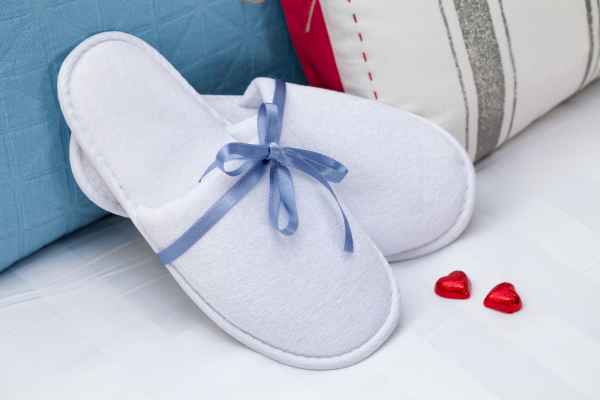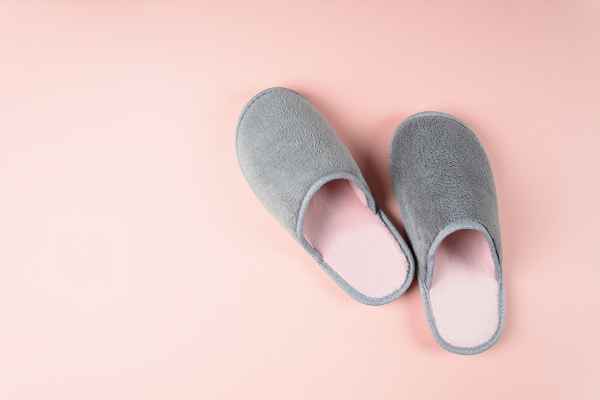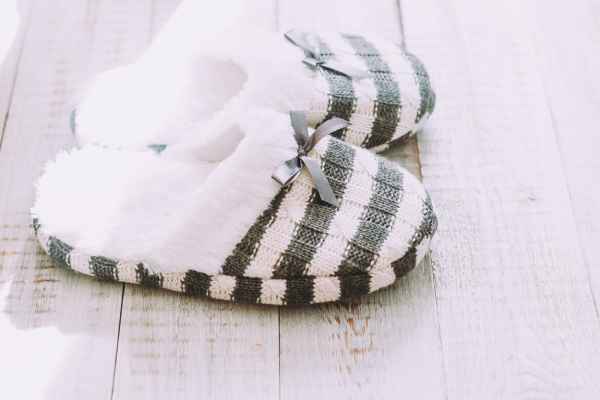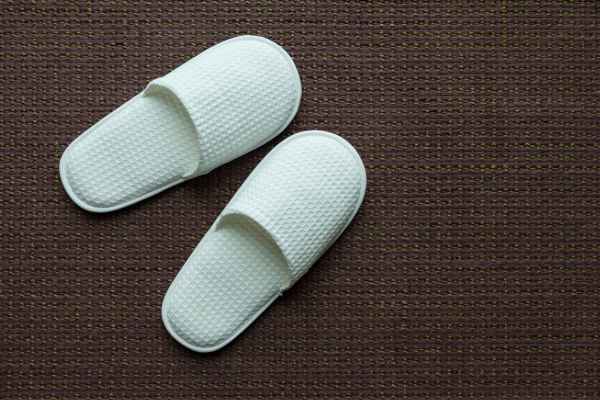For those suffering from plantar fasciitis, finding the right footwear is not just about comfort—it’s a crucial step towards alleviating pain and promoting healing. Bedroom slippers, often overlooked, play an essential role in providing the necessary support even at home. This guide focuses on the importance of selecting the best bedroom shoes for those dealing with plantar fasciitis, ensuring that every step taken at home contributes positively to foot health.
What Is Plantar Fasciitis?
Plantar fasciitis is a common condition characterized by sharp, stabbing pain in the heel or bottom of the foot. The discomfort primarily stems from inflammation of the fascia, a thick band of tissue that runs across the bottom of your foot and connects your heel bone to your toes. This condition is particularly prevalent among athletes, overweight individuals, and those who wear inadequate footwear.
Importance Of Proper Footwear

Proper footwear is vital for managing and healing plantar fasciitis. The right shoes or slippers can significantly reduce stress on the heel and the fascia, providing much-needed relief from pain. Especially at home, where individuals spend considerable time without shoes, selecting appropriate shoes can prevent prolonged periods of stress on already inflamed tissues, aiding in quicker recovery and prevention of further damage.
Key Features To Look For In Slippers

Choosing bedroom slippers for plantar fasciitis, several key features must be considered to ensure optimal support and comfort. First, look for shoes with a strong arch support that helps to distribute pressure evenly across the foot. Memory foam or orthotic insoles can also be beneficial as they mold to the shape of the foot, providing personalized support. Additionally, a deep heel cup is essential as it stabilizes the heel and absorbs the impact while walking. Finally, opt for shoes with a non-slip sole to prevent falls and maintain stability, which is crucial for protecting your feet and avoiding aggravation of the condition.
Top Types Of Slippers For Plantar Fasciitis

When it comes to managing plantar fasciitis, not all bedroom shoes are created equal. Orthopedic slippers are specifically designed to offer the support and cushioning needed to alleviate foot pain. These often feature enhanced arch support and a more structured design. Another popular choice is memory foam slippers, which adapt to the shape of the foot, providing personalized comfort and support. Adjustable shoes with Velcro closures are also ideal, as they allow for changes in foot size throughout the day, common with fasciitis due to swelling.
The Role Of Arch Support In Slippers

Arch support is crucial in any footwear for plantar fasciitis, including bedroom slippers. It helps to maintain the foot in a natural alignment, reducing strain on the plantar fascia. Proper arch support in shoes continuously supports the foot arch, minimizes the load on the heel, and reduces the risk of pain flares. This support is essential not just for comfort, but for therapeutic reasons, helping to prevent further damage to the fascia during routine home activities.
Best Bedroom Slippers For Plantar Fasciitis On The Market
Several brands and models stand out when it comes to the best bedroom shoes for plantar fasciitis. Orthofeet’s Asheville and Charlotte shoes are renowned for offering orthotic support, ergonomic cushioning, and an adjustable design. Vionic’s Relax slippers are another top choice, featuring a biomechanically contoured footbed and a soft, comforting upper. These shoes not only reduce foot pain but also provide essential support for the arch and heel, making them excellent choices for home use.
DIY Solutions To Enhance Comfort In Bedroom Slippers

For those who want to enhance the comfort of existing bedroom slippers, there are several DIY solutions. One effective method is to insert custom orthotic insoles designed for plantar fasciitis. These can be purchased over the counter or custom-made for a perfect fit. Another option is to add heel pads or arch support strips to your shoes, which can provide additional cushioning and support where needed. Additionally, using a soft, thick sock can also improve the cushioning effect of slippers, providing extra protection and comfort for sensitive feet.
Maintaining Your Bedroom Slippers For Longevity

To ensure that your bedroom slippers last longer while providing consistent support for plantar fasciitis, proper maintenance is key. Regularly cleaning the shoes according to the manufacturer’s instructions is essential to prevent the buildup of dirt and odors. If the shoes have removable insoles, take them out periodically to air out and replace them if they begin to lose their supportive qualities. Also, avoid wearing the same pair all day; rotating between slippers can help preserve their structure and effectiveness.
Additional Footwear Tips For Plantar Fasciitis Sufferers

For those suffering from plantar fasciitis, choosing the right footwear extends beyond just selecting the appropriate bedroom slippers. It’s crucial to wear supportive shoes during the day that provide ample arch support and cushioning. Avoid walking barefoot, as this can put additional strain on your fascia. When purchasing new shoes, do so later in the day when your feet are more swollen to ensure a better fit. Additionally, consider shoes with a slight heel rather than completely flat footwear to reduce stress on the fascia.
How Often Should I Replace My Bedroom Slippers If I Have Plantar Fasciitis?
Individuals with plantar fasciitis should replace their bedroom slippers more frequently than is typical. Generally, it’s advisable to replace them every six months to a year, depending on their wear and level of support. Signs that it’s time to replace your shoes include noticeable wear on the sole, diminished arch support, or when the cushioning becomes compressed and no longer rebounds. Regularly assessing the condition of your slippers and replacing them when needed is crucial for maintaining foot health and comfort.
Can I Wear Orthotic Inserts With My Bedroom Slippers?
Yes, incorporating orthotic inserts into your bedroom slippers can be an excellent way to enhance their supportiveness, especially for those with fasciitis. Many shoes come with removable insoles, allowing you to replace them with custom or over-the-counter orthotics. This adjustment can provide targeted support to the arch and heel, significantly reducing the discomfort associated with plantar fasciitis. Ensure that the slippers have enough depth to accommodate the orthotic without causing your foot to sit too high or the slipper to fit poorly.
Are There Specific Slipper Brands Recommended By Podiatrists For Plantar Fasciitis?
Podiatrists often recommend specific brands of bedroom slippers for those suffering from plantar fasciitis due to their proven support and comfort. People often suggest brands like Vionic and Orthofeet because these brands offer shoes with substantial arch support and deep heel cups. For example, Vionic shoes feature Orthaheel technology, which provides excellent biomechanical support and has received approval from the American Podiatric Medical Association. Orthofeet also offers shoes with ergonomic soles and a cushioning system that can be particularly beneficial for fasciitis relief. Other reputable brands such as Spenco with their Total Support technology, and Tempur-Pedic, known for their temperature-responsive memory foam, also come highly recommended.
Conclusion
Choosing the right bedroom slippers when suffering from plantar fasciitis can make a significant difference in daily comfort and overall foot health. You should select shoes that support the arch and cushion the heel adequately, qualities found in products endorsed by podiatrists. Additionally, maintaining and replacing shoes regularly, considering additional support options like orthotic inserts, and adhering to broader footwear guidelines all contribute to effective management of fasciitis. By prioritizing foot care even at home, individuals can greatly alleviate the symptoms of plantar fasciitis and improve their quality of life.
